Bill Harvey tries out one of the latest additions to the Haag-Streit slit-lamp range
The slit lamp is as integral to the eye examination as the ophthalmoscope. Accurate assessment of the external and anterior ocular structures is a competency requirement for all entry-level optometrists and certainly all practitioners working in the contact lens arena.
Obviously, the slit-lamp biomicroscope is the essential instrument for this and the designs have changed little over recent years. Generally speaking, the more money you pay, the better the range of magnification, choice of filters and quality of the optics.
It was with interest that I noted the latest additions to the Haag-Streit range which recognises the increasing importance of photography and image capture in the consulting room. Until now, adding a capture system to a slit lamp has meant buying an adapter, a beam splitter and a host of peripherals.
The Haag-Streit BP-900 (Figure 1) is of interest in that it has an integrated beam splitter and, as such, is available ready for an image-capture system. With the increasing use of such systems and their usefulness in maintaining accurate and safe records, it was only a matter of time before slit-lamp design moved towards incorporating capture systems as the norm and the BP-900 represents this first step.
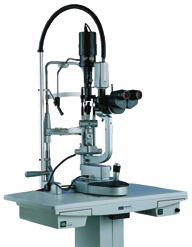 |
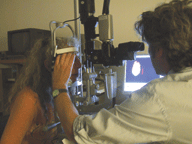 |
| Figure 1. The Haag-Streit BP-900 | Figure 2 |
DESIGN FEATURES
As would be expected from a Haag-Streit slit lamp, the operation of the BP-900 is easy and familiar. The unit I used had a magnification range from 10 to 25 times and the usual array of filters (a yellow filter is optional for enhancement of fluorescein assessment).
The integral beam splitter may be ordered from two options. For occasional photographers, the adapter may be selected for a standard stills camera to be mounted onto the unit. The manufacturer recommends the Canon S60, though I can see no reason why other models, possibly even analogue, could not be used if preferred. The system I used incorporated a C-mount adapter with integral 70:30 beam splitter upon which a Sony Digital 1CCD firewire camera (DFW-X710) was mounted.
Toshiba and Hitachi cameras are also recommended. The firewire link allows excellent live feed quality while assessing the eye ready for capture and also facilitates the capture of video. The important point is that having the camera system integral meant that the whole slit lamp was not overly encumbered by having a camera attachment and its normal operation in examining an eye was in no way affected.
For images anterior to the iris, the use of a good controllable backlight is very useful. I find that, even with a sensitive rheostat, the use of the slit beam gives too many unwanted reflections unless a diffuser is used (Figure 3). Some previously available backlighters on flexi attachments have proved less than reliable and on occasions I have found blu-tack and a pen torch just as useful.
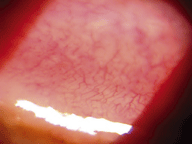 |
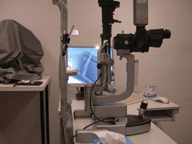 |
| Figure 3 | Figure 4 |
The so-called Ecolite may be used with the video attachment and provides a bright light source which is easily controlled by means of a moveable collar (Figures 4 and 5). The unit is powered by a straight feed in the table top of the BP-900 but may be adapted for use with other units. I found the Ecolite very useful for capturing gross anterior shots (Figure 6) and easy to adjust.
Another interesting feature, which I have to confess took a little while to get used to, is a novel rheostat for the slit-lamp beam. Rather than the more familiar wheel on the table unit, the light level is controlled by means of a small button on the joystick itself. By clicking this, the light level reduces or increases in three steps. By maintaining pressure on the button, the light level gradually decreases then increases again.
With practice, this gives the practitioner an excellent amount of control over the view achieved and, in conjunction with the rheostat on the Ecolite unit, allows for excellent viewing adjustment.
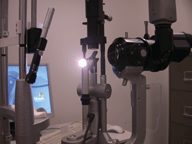 |
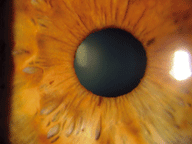 |
| Figure 5 | Figure 6 |
PRACTICAL USE
As expected, the unit came with a link to the EyeCap system which allows for video capture as well as stills. This is particularly useful for contact lens patients, both for teaching purposes and for showing a patient a lens moving on their eye. A selection of some of the images taken with the system are shown over the page.
Figures 7 to 10 show significant pinguecula on a patient worried by the 'yellow' lumps on her eyes. The software allows measurement of any elevations or specific lesions, but in this case the images were useful to illustrate the condition while I explained their significance.
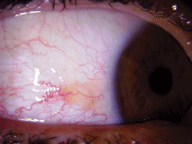 |
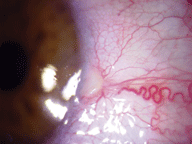 |
| Figure 7 | Figure 8 |
A second patient, who had recently been diagnosed as having Sjögren's syndrome, presented with a small papilloma on the lower lid (Figures 11 and 12) and blocked meibomian gland orifices (Figure 13), but clearly patent puncta (Figure 14). Blepharitis, the bane of modern optometry clinics, was in evidence on several patients screened (Figures 15 and 16).
The gain on the camera was sufficient to capture a narrow corneal section, making it possible to image a van Herrick assessment (Figure 17).
For those patients being dilated, capture of the view through a Volk lens was possible (Figure 18), though in no way a substitute for a dedicated fundus camera.
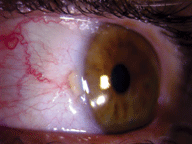 |
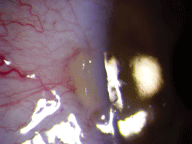 |
| Figure 9 | Figure 10 |
IMAGING AS STANDARD
Anyone familiar with the basic Haag-Streit design of slit lamp will find the BP-900 a joy to use. The manufacturer's claim that 'this is an everyday slit lamp designed to make slit-lamp imaging part of everyday practice' is well justified and my guess is that it won't be too many years for this sort of integration to be the norm.
The slit lamp and camera package is currently being offered at £11,995 and is worth considering by anyone thinking of updating their slit lamp.
OPTICIAN thanks Haag-Streit for loan of the system.
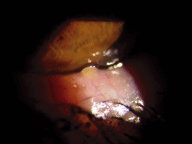 |
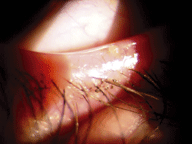 |
| Figure 11 |
Figure 12 |
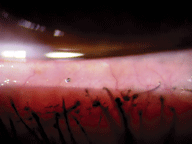 |
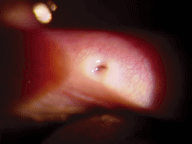 |
| Figure 13 | Figure 14 |
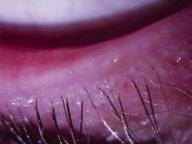 |
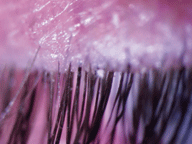 |
| Figure 15 | Figure 16 |
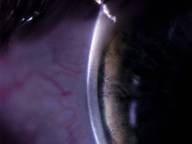 |
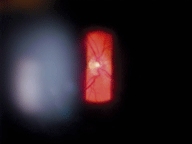 |
| Figure 17 | Figure 18 |
